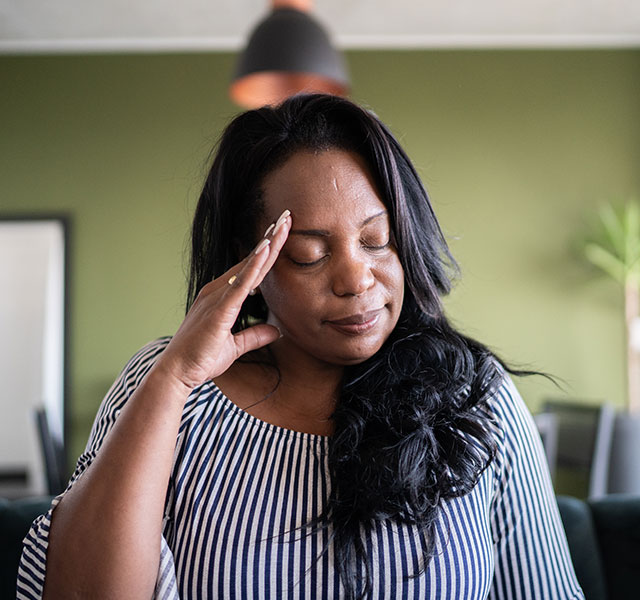Postural orthostatic tachycardia syndrome (POTS) is a chronic condition that affects the nervous system and blood circulation. It can cause lightheadedness, rapid heart rate and fatigue when standing. Anyone can develop POTS, but it most commonly affects women ages 15 to 50.
Even though less than 1% of the U.S. population develops POTS, awareness about the condition has increased during the COVID-19 pandemic. That’s because antibodies produced after a viral infection like COVID-19 can cause POTS.
The good news is that a combination of treatments can eliminate or improve symptoms of POTS. “Many people see improvement in their symptoms by staying hydrated, increasing salt intake and exercising regularly. If necessary, medications can also help reduce POTS episodes,” says Arfaat Khan, M.D., a cardiologist at Henry Ford Health.
What Causes POTS?
There may be many underlying factors causing POTS. Researchers are examining how antibodies developed after viral infections like COVID-19 interfere with the nervous system’s response when a person stands. Other factors such as dehydration, low blood volume or poor muscle conditioning in the legs may also contribute to the development of POTS.
What Are The Symptoms Of POTS?
Every time you stand up, about a liter of blood flows to the lower portion of your body. While this is happening, your nervous system reacts to make sure enough blood gets to your brain. Nerve sensors stimulate blood flow and heart rate increases by about ten beats per minute. Sensors also trigger leg muscles to tighten, constricting blood vessels to send blood back to the upper body. After a few minutes, your heart rate returns to normal (60 to 90 beats per minute for most people).

Heart And Vascular Care
When people with POTS stand, that nervous system response is exaggerated. Their heart rate increases by 30 or more beats per minute. At the same time, blood vessels in their legs do not tighten, and blood pools in their lower body. Depending upon the severity of the condition, their heart rate may not return to normal until they sit or lie down.
The number and severity of symptoms vary for individuals with POTS. In addition to a rapid heart rate and light-headedness, people with POTS may experience other symptoms:
- Difficulty concentrating
- Excessive sweating
- Fainting
- Fatigue
- Pain in the head or shoulders
- Nausea and vomiting
How Is Pots Diagnosed?
Your doctor can diagnose POTS based on your symptoms and by measuring changes in your heart rate when you stand up. Your physician may assess your heart rate in the exam room or with a standing tilt test.
For a standing tilt test, you are strapped to a table where you lay still for several minutes. You are then tilted up to a vertical position to simulate standing up. Monitors capture changes in your heart rate and blood pressure.
What Are The Treatments For POTS?
“Studies show that symptoms go away on their own for 20% of people with POTS. About half of patients see improvement in symptoms after treatment, and 16% continue to have symptoms regularly,” says Dr. Khan.
For many patients, a combination of treatment approaches helps reduce or manage POTS symptoms. Your doctor may recommend:
- Dietary changes: Increasing fluids and sodium in your diet keeps more water in your bloodstream, helping more blood reach your heart and brain. Dr. Khan recommends drinking about three liters of water and consuming eight to 12 grams of salt daily. In general, most Americans get adequate sodium in their diet. So talk with your doctor to determine whether you need to increase the amount of sodium you eat daily.
- Regular exercise: Aerobic exercise and strength training can help build leg muscles and improve blood vessel constriction. Choose a recumbent bike or rowing machine to avoid POTS symptoms during exercise. Start with 30 to 40 minutes of exercise three to four times weekly. Gradually increase the length and number of sessions over time.
- Avoiding symptom triggers: Time in warm environments like a hot shower or tub can worsen POTS symptoms. Caffeine, alcohol and diet pills can cause dehydration and trigger symptoms.
- Improving lifestyle habits: Prioritize self-care and adopt good sleep habits. Manage stress and anxiety with relaxation exercises or by taking breaks throughout the day.
- Wearing compression support: When standing, thigh-high support socks help blood vessels in your leg constrict and prevent blood pooling in your lower body.
For more severe symptoms, your doctor may recommend medications to manage your heart rate, blood volume and circulation. “Talk with your doctor about what treatments are right for you so you can return to the activities you enjoy,” says Dr. Khan.
Reviewed by Dr. Arfaat Khan, a board-certified cardiologist who sees patients at Henry Ford Hospital in Detroit and Henry Ford Wyandotte Hospital.



